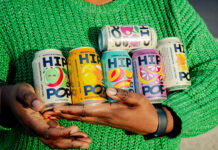Creating the perfect drinks presentation box requires a multi-faceted approach, explains Mark Pollard, managing director of Pollard Boxes
IN the premium drinks sector, brand image is everything. On-shelf presentation is therefore critical in attracting both new consumers and repeat purchasers, creating anticipation and excitement, and conveying the key qualities that sets a particular drink apart from its rivals.
This high-impact appearance then has to be reinforced when the pack is handled for the first time, providing further reassurance through the quality and feel of the materials used that this is a premium product which will deliver on its promises.
The design of a rigid presentation box involves a number of stages. We refer to these as the different layers that are added during the development process to create each time a packaging solution that is both stunning in its appearance and fit for purpose in its functionality.
Since one of the fundamental requirements of any pack is to protect the product, the first layer is the structural composition of the box. Choice of the base material will ensure a robust construction that keeps the bottle it contains safe and in pristine condition. Use of vacuum formed inserts to hold the bottle in place will provide added protection during transit.
At the same time, the design of the box can also play a crucial role in the display of the bottle on-shelf. In particular, the use of front opening boxes means the pack can double as a display unit that showcases the bottle to attract passing customers. Latest developments in this area include our recently launched FOTL (Front Opening, Top Loading) solution that greatly speeds up the loading of front opening packs by allowing them to be fulfilled on the bottling line rather than by hand off-line.
Once the construction of the box has been finalised, the next layer can be added – paper. This is one of the most crucial elements to the packaging as it contributes a large percentage of the visual and in-hand tactile experience for the consumer.
With a huge variety of papers on the market, understanding brand image and the messaging that needs to be put across will be crucial in the final selection. If demonstrating sustainability is a key requirement, papers that are FSC accredited or comprise 100% post-consumer waste could be an appropriate choice. In many instances, particular effects may be needed as part of the overall brand image and to deliver these there are many types of specialist papers. For example, to create a box with a noticeable shine, we might suggest a paper heavy in mica particles or a pearlescent paper that shimmers more gently in the light.
For one of our recent projects for Glenfiddich Winter Storm, a single malt whisky which is intensified in ice wine casks, the requirement was for a frosty feel to the pack. This was achieved by using White Accent Fresco Gesso from G.F Smith as the base layer, a thick, fibrous tactile paper giving a white snowy appearance.
Selection of the initial paper layer also needs to take into account the next layer of the pack – use of print and special finishes. These are the final touches that can really elevate a pack and establish a high degree of brand differentiation and individuality.
Foiling can make certain areas of the pack come alive, the addition of spot UV gives a thick glossy accent, and the use of a matte lamination can give a pack a sleek modern feel. Very often the impression that these effects create is then further reinforced by a printed description of the drink or explanation of the special techniques behind its creation within the box.
Equally important, if the decoration process can be provided in-house by the box manufacturer, this will ensure that a high quality of finish is achieved and maintained, particularly as the manufacturer will have the relevant knowledge of the characteristics of individual papers.
Continuing with the example of the Winter Storm box, three processes were applied to the paper. It was first printed with a silver metallic pantone for the dull silver tones. This was followed by a flat satin silver foil to make selected frosty areas shimmer like ice. Finally, to accentuate the tactility of the pack even further, a blind emboss was added to evoke a pattern similar to that seen on a window on a cold frosty morning. The thick paper also helped keep the emboss proud, which both highlighted the colour of the print free areas on the paper while adding further depth to the areas that were printed and foiled.
Taking this ‘layered’ approach creates a stand-out pack that is aligned with the product offering, ensuring prominence on-shelf and effective brand reinforcement throughout the buying process.













